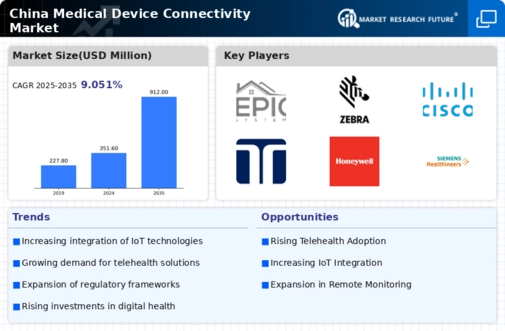The China Medical Device Connectivity Market is growing quickly because more people want innovative healthcare solutions, chronic diseases are becoming more common, and the healthcare industry is always moving toward digitization. As the market grows, competition between medical device makers and technology suppliers gets tougher. This leads to new connection solutions that improve patient care and make clinical workflows easier. Companies are working on making systems that work together better with medical equipment, electronic health records, and other healthcare IT platforms.
This greater connectedness is essential for allowing real-time data sharing, making better decisions, and making healthcare facilities in China more efficient overall.
Medtronic has been a major player in the China Medical Device Connectivity Market thanks to its long history and deep knowledge of medical technology. The company's unique products work well with healthcare IT systems and provide solutions that make it easier to keep an eye on and manage patients. Medtronic's strengths come from its dedication to research and development, which lets the business provide healthcare providers in China the most up-to-date connectivity solutions that meet their needs. Medtronic stays competitive in the market by focusing on new ideas.
It also builds strong ties with local healthcare groups and regulatory bodies, which makes it easier for the company to adapt to China's changing healthcare scene.
IBM Watson Health is another a big name in the China Medical Device Connectivity Market. Their main goal is to use advanced analytics and AI to make healthcare better. The company sells a variety of products and services that help medical devices link to each other, which makes it easier for healthcare professionals to analyse and understand patient data. IBM Watson Health is in a unique position in the market because of its skills in data processing and machine learning. This lets it provide insights that help doctors make better decisions.
The company's initiatives in strategic alliances and collaborations in China help it reach more customers and improve its ability to integrate healthcare data. IBM Watson Health wants to strengthen its position and impact in the Chinese healthcare ecosystem by always coming up with new ideas and focusing on improving patient care.




















